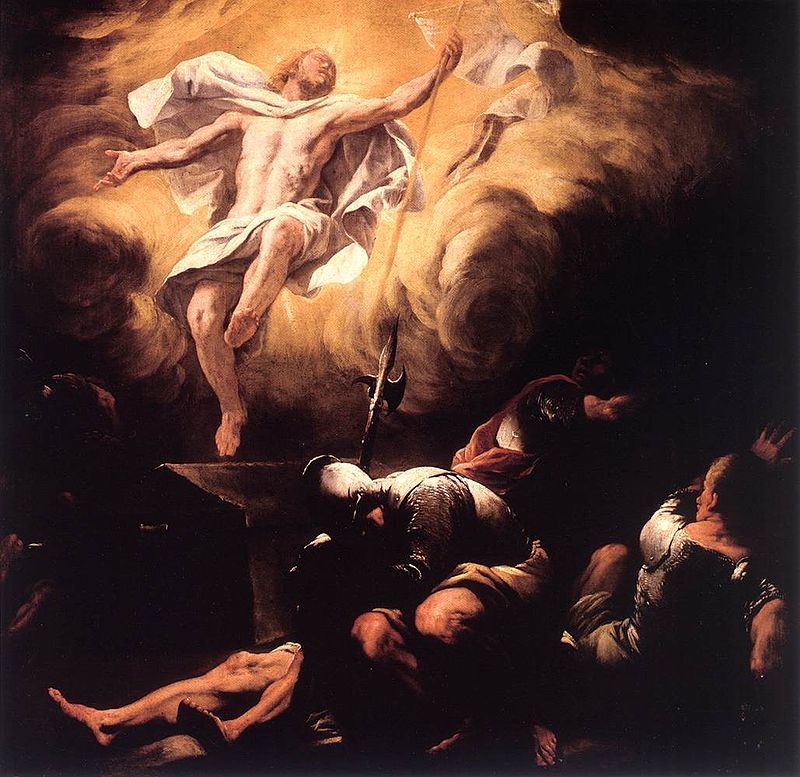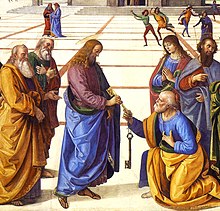Photo: Hannah Clarke with her three children, Trey, Aaliyah, and Laianah. (Facebook)
By Spencer D Gear PhD
As I began writing this article, horrendous grief and anger are being poured out by family, friends and neighbours in Brisbane over the alleged murder and suicide of a family of four (mother and 3 children) burned to death in a car and the alleged DV perpetrator killing himself.
The ABC Brisbane headline (20 February 2020) was: Hannah Baxter[1] dies in hospital after three children killed in suspected murder-suicide in Brisbane’s Camp Hill, father Rowan Baxter dies at scene.
It is understood the wife, Hannah, was driving, husband Rowan was in the passenger seat. Three children aged 6, 4 and 2 were in the car. One witness of the event told The Guardian, ‘[Hannah] Baxter had run from the car screaming, “He’s poured petrol on me.”[2] This was the result (see image):
 (Police attend the scene of the car fire which claimed the lives four people in Brisbane. Photograph: Dan Peled/AAP)[3]
(Police attend the scene of the car fire which claimed the lives four people in Brisbane. Photograph: Dan Peled/AAP)[3]
A flood of grief has burst upon this Australian nation along with a call to do something more about DV behaviour.
 Photo: Flowers have been left near where the family died in the Brisbane suburb of Camp Hill. (ABC News: Kate McKenna)
Photo: Flowers have been left near where the family died in the Brisbane suburb of Camp Hill. (ABC News: Kate McKenna)
DV epidemic
Australia is in the midst of a crisis of domestic violence. John Wren looked at DV statistics in this country:
Domestic violence is an epidemic in Australia. The statistics make sobering reading. On average, one woman a week is killed by their (sic) partner. The combined health, administration and social welfare costs of violence against women have been estimated to be $21.7 billion a year with costs rising exponentially in the future.
The Morrison Government loves to trot out the mantra that they are “keeping Australians safe” as their excuse for ever more draconian migration laws, monitoring laws and encryption laws, but their inaction on domestic violence and, in many cases, actions that actually make it worse belie the hollowness of the marketing spin that the phrase really is.
The Abbott Government cut funding to domestic violence programs and the Turnbull and Morrison Governments have continued that trend. It was suggested that Hannah Clarke had sought help to escape her violent husband but was unable to secure support through facilities already denuded by year after year of defunding. If this is true, then the Morrison Government through its budget cuts must bear some culpability for the death of her and her children (Wren’s Week: The Australian domestic violence epidemic, 22 February 2020).
So far today police in Australia would have dealt with on average 522 domestic violence matters. |
(Data source: ABC News, Brisbane Qld)[4]
Is the government open to ‘whatever has to be done’?
Minister for Home Affairs, Peter Dutton, stated after this Clarke/Baxter tragedy:
“Baxter’s fire attack on his family was “horrific”.
“No-one could imagine the sadistic and premeditated nature of this violence, and I think Governments of any persuasion will do whatever we can.
“It is not an issue of money for a lack of ability or desire to change the laws. I think all of us stand united and have done for a long time in whatever we can do to stamp out this violence”.[5]
Deputy Labor leader Richard Marles said the issue was above politics.
“I think all of us are open to whatever needs to be done, and I agree with you. You know, whatever has been done up until now doesn’t seem to be working.
“This is a scourge within our society and somehow we need to address it and get rid of it, and whatever that requires, in terms of whatever that requires, in terms of whatever kind of inquiry – and Peter is right – it is not about – we will do whatever, in terms of laws, money – this has to be brought to an end.”[6]
The Coalition’s Peter Dutton wants DV stamped out and governments will do whatever they can to make that happen.
 Richard Marles agrees from the opposition bench. All will do whatever needs to be done to get rid of the scourge of DV. Marles thinks of an inquiry, change of laws and money.
Richard Marles agrees from the opposition bench. All will do whatever needs to be done to get rid of the scourge of DV. Marles thinks of an inquiry, change of laws and money.
(image courtesy Clipartstation)
However, are they sincere in being ‘open to whatever needs to be done’ and will carry out ‘whatever we can do to stamp out this violence’? I have my doubts.
I’ll suggest a solution below that I can’t see Dutton and Marles doing hand-stands to achieve the eradication of DV.
Governments throw money at the problem
The Guardian Australia Edition reported in March 2019 ‘the Coalition [government] has pledged an extra $328m over three years to fight domestic violence, with frontline services, safe places and prevention strategies to receive the biggest grants’.[7]
In November 2019, the Queensland government (where I live) called for applications:
Apply now for a grant to help end domestic and family violence
Applications are now open for a share in $150,000 in grants for community organisations to host events during Domestic and Family Violence Prevention Month in May 2020.
Minister for the Prevention of Domestic and Family Violence Di Farmer said grants of up to $5,000 each were available for projects designed to raise awareness, encourage community participation, and support people affected by domestic and family violence.[8]
In November 2019, the Federal government advised the ‘National Family Violence Prevention and Legal Services Forum (NFVPLS) its $244,000-a-year funding would not be renewed past June 2020’.[9] This organisation deals with DV among indigenous people. Labor’s Shadow Minister for Indigenous Affairs, Linda Burney, said
the statistics showed a desperate need for more funding for domestic violence services, not less.
“When you look at the shocking statistics relating to Aboriginal women and family violence — 34 times more likely to be hospitalised, 10 times more likely to be murdered from violent assault — it beggars belief that this would happen,” she said.[10]
I’m in favour of funding DV services and education programs. More are needed and governments need to invest more if they are serious about spreading the anti-DV message, ‘Stop it at the start’.
It’s not only a male issue
9News reported:
Police respond to a “serious domestic dispute” somewhere in the country every two minutes.
· One in six women and one in 16 men have experienced physical or sexual violence
· One in four women and one in six men have experienced emotional abuse
· One in five women and one in 20 men have experienced sexual violence
· One in six women and one in nine men were physically or sexually abused
· One in two women and one in four men have been sexually harassed
· One in six women and one in 15 men have experienced stalking
· One in four Australian children is exposed to family violence.[11]
White Ribbon Australia acknowledged, ‘Sadly, both women and men are more likely to experience violence at the hands of men. Around 95% of all victims of violence, whether women or men, experience violence from a male perpetrator’.[12]
 (image courtesy Pinterest)
(image courtesy Pinterest)
The Australian Social Monitor (1999) reported that the usual belief is that the overwhelming amount of DV is perpetrated by men against women. However this study in 1996/97 found that
partnered men and women were questioned about committing or suffering physical domestic violence in the last 12 months,[and they] show that women and men were equally likely to suffer injuries of about the same severity. There was some evidence of intergenerational transmission of violent behaviour both from father to son and mother to daughter. However, most respondents who admitted violence did not claim to have had violent parents.[13]
Lewis & Sarantakos (2001:2) claimed that over the last few decades, DV has been primarily defined as violence by men against women. Violence by women against their male partners was ‘considered to be either non-existent, or the fault of men, or has been trivalised and justified in a variety of ways’.
Their research challenged this notion and consider ‘the existence of this form of abuse is part of a fundamental disempowerment of men which has arisen from a tacit acceptance in society of the radical feminist agenda’. Lewis & Sarantakos concluded ‘that domestic violence is not an issue of gender, and that official policy should be directed to providing the kind of help for abused men which up until now has been available only to women’ (2001:2).
While acknowledging there is a major percentage of DV by men against women, the Australian Institute of Criminology identified a proportion of female DV perpetrators against men:
According to the findings of the ABS (2006) Personal Safety Survey, 78 percent of persons who reported being a victim of physical violence at the hands of a partner in the previous 12 months were female. Similarly, research by Access Economics (2004) found that 87 percent of all victims of domestic violence are women and that 98 percent of all perpetrators are men (Morgan & Chadwick 2009).
Is the real solution too religious?
There is a cure for the problem for both males and females who commit domestic violence (DV). However, the treatment is very Christian. Are you open to this Christian solution?
Reddit came close with its flair: ‘Male depravity’. It’s short of the mark because it misses half of the story. ‘Depravity’ hit the mark but applying it only to males is a biblical no-no!
Why? All people are depraved, male and female. The Old Testament prophet, Jeremiah, nailed the problem for those who commit (DV), but it has application to all people who commit evil, ‘The human heart is the most deceitful of all things, and desperately wicked. Who really knows how bad it is?’ (Jer 17:9 NLT)
All people are badly sick with a sinful disease that is grounded in the human heart.
“Heart” (Hebrew lebab/leb [b’bel], Greek. kardia [kardiva]) occurs over one thousand times in the Bible, making it the most common anthropological term in the Scripture. It denotes a person’s center for both physical and emotional-intellectual-moral activities; sometimes it is used figuratively for any inaccessible thing (Baker’s Evangelical Dictionary of Biblical Theology 1996. s.v. Heart).
The cure
I know of only one way to change the human heart from depravity to uprightness, from evil actions to freedom from the sin of DV. The cure comes from a changed inner person – a heart. It comes through repentance and faith in Jesus Christ who came to save sinners and make them righteous.
The apostle Paul stated it clearly in Scripture:
This is a trustworthy saying, and everyone should accept it:
“Christ Jesus came into the world to save sinners”—and I am the worst of them all. But God had mercy on me so that Christ Jesus could use me as a prime example of his great patience with even the worst sinners. Then others will realize that they, too, can believe in him and receive eternal life (1 Tim 1:15-16 NLT).
This wicked blasphemer and persecutor of the Christian church, the Pharisee Saul, was changed from doing violence to Christians to proclaiming Jesus Christ across the then known world. He experienced the change all DV perpetrators need.
What changed him? ‘I am not ashamed of the gospel, because it is the power of God that brings salvation to everyone who believes: first to the Jew, then to the Gentile’ (Rom 1:16 NIV). Proclamation of the gospel of salvation through Christ alone turned a wicked, Christ-blaspheming sinner into a firebrand for the proclamation of the Christian message.
How does this happen for Jewish persecutors of Christians in the first century, persecutors of Christians in the Western world, changing murderers to decent people, and changing DV perpetrators into righteous people?
Bob Thune explained it in another context:
Somewhere along the line, we have individualized the gospel. We said it was just about “you and Jesus.” We forgot that the gospel doesn’t just change eternal destinies; it changes everything. The gospel transforms societies, renews families, and heals relationships. That’s why Jesus called it “the gospel of the kingdom” (Luke 16:16).
The gospel is all about the rule and reign of Jesus. And where Jesus is rightly honored as Lord, there is more than just personal salvation; there is redemptive action! The gospel is holistic. For me to say that I cared about Ryan’s soul without caring about his relationship with his family would be the pinnacle of hypocrisy.
The answer wasn’t, “Get saved and then we’ll deal with your family relationships.” The answer was, “God wants to heal the wounds in your family. He is a redemptive God” (Thune 2010. The Gospel changes everything, emphasis added).
The treatment for the DV perpetrator is:
(1) Education about DV and anger-control strategies;
(2) Proclamation of the Gospel of salvation through Christ;
(3) A call to forgiveness of sins and repentance.
(4) If the person responds positively to the Gospel, the local church must provide discipleship to help the person grow as a Christian.
Follow these biblical principles[14]
The new Christian and former DV perpetrator will not change only by giving up DV habits. It may take time for change to blossom into maturity (called Christian sanctification).
For lasting change to be established in a person’s life, bad practices need to be replaced with godly practices. This ‘Principle of Replacement’ is found in such Scripture as Ephesians 4:21-24 (NLT):
Since you have heard about Jesus and have learned the truth that comes from him, throw off your old sinful nature and your former way of life, which is corrupted by lust and deception. Instead, let the Spirit renew your thoughts and attitudes. Put on your new nature, created to be like God—truly righteous and holy (emphasis added).
In growing up to be more like Jesus in their behaviours, DV perpetrators need to stop DV actions and replace them with righteous and holy behaviour. Stopping bad behaviour is inadequate to bring about radical change. The old way of living must change, thanks to God’s grace and the Holy Spirit’s fruit, God wants to see this change:
The Holy Spirit produces this kind of fruit in our lives: love, joy, peace, patience, kindness, goodness, faithfulness, gentleness, and self-control. There is no law against these things! (Gal 5:22-23 NLT).
Can you imagine what your relationships would be like if these behaviours were demonstrated in your bonds with people, instead of DV?
The apostle Paul told the Corinthians what this means: ‘Anyone who belongs to Christ has become a new person. The old life is gone; a new life has begun!’ (2 Cor 5:17 NLT).
Conclusion
I cannot see any government programme, rally, advertising campaign, or Royal Commission to be effective ultimately in smashing the DV emergency in Australia when the core issue is not being addressed.
DV education programs are worthwhile as a tool to offer help and techniques to resolve the anger outbursts. However, for a long-term solution that works, I know of only one way – an individual becomes a ‘new person’ through a relationship with Jesus Christ.
It’s time for the Christian churches that believe in the Gospel proclamation to step up and demonstrate a true DV solution – proclamation of the Gospel and salvation through Christ – that leads to changed hearts of people. We need to see a deluge of DV perpetrators becoming ‘new persons’ in Christ. This won’t happen without a strong Gospel message in the public square.
See my other articles on domestic violence:
Works consulted
Lewis, A & Sarantakos, S 2001. Domestic Violence and the Male Victim. Nuance no. 3 (online), December, 1-15. Available at: http://www.498a.org/contents/dv/DomesticViolenceAndMaleVictims.pdf (Accessed 22 February 2020).
Morgan, A & Chadwick, H 2009. Key issues in domestic violence. Australian Institute of Criminology (online), December. Available at: https://aic.gov.au/publications/rip/rip07 (Accessed 22 February 2020).
Notes:
[1] Also known as Hannah Clarke.
[2] Michael McGowan 2020. Brisbane car fire: Hannah Baxter dies of injuries, three children killed in suspected family violence case .(online)., The Guardian Australia Edition, 20 February. Available at: https://www.theguardian.com/australia-news/2020/feb/19/three-dead-including-children-after-car-allegedly-set-alight-in-brisbane (Accessed 22 February 2020).
[3] Ibid.
[4] ABC News, Brisbane, Qld 2019. Federal Government axes funding to peak body representing Indigenous survivors of domestic violence (online)., 6 December. Available at: https://www.abc.net.au/news/2019-12-06/aboriginal-domestic-violence-survivors-peak-body-defunded/11773066 (Accessed 22 February 2020).
[5] 9News 2020. ‘This has to be brought to an end’ (online), 21 February. Available at: https://www.9news.com.au/national/brisbane-car-fire-attack-police-appeal-for-information-about-baxter-family-killing/6300f87d-49c6-4fed-806c-74590d4b197e (Accessed 22 February 2020).
[6] Ibid.
[7] Coalition pledges an extra $328m to counter domestic violence (online), 5 March. Available at: https://www.theguardian.com/australia-news/2019/mar/05/coalition-pledges-an-extra-328m-to-counter-domestic-violence (Accessed 22 February 2020).
[8] Queensland Government 2019. The Queensland Cabinet and Ministerial Directory. Media Statements (online), 11 November. Available at: http://statements.qld.gov.au/Statement/2019/11/11/apply-now-for-a-grant-to-help-end-domestic-and-family-violence (Accessed 22 February 2020).
[9] ABC News, Brisbane, Qld 2019. Federal Government axes funding to peak body representing Indigenous survivors of domestic violence (online), 6 December. Available at: https://www.abc.net.au/news/2019-12-06/aboriginal-domestic-violence-survivors-peak-body-defunded/11773066 (Accessed 22 February 2020).
[10] Ibid.
[11] 9News loc. cit.
[12] White Ribbon Australia 2020. Violence against men. Available at: https://www.whiteribbon.org.au/understand-domestic-violence/violence-against-men/ (Accessed 22 February 2020).
[13] Headey, Bruce; Scott, Dorothy and de Vaus, David. Domestic Violence in Australia: Are Women and Men Equally Violent? [online]. Australian Social Monitor, Vol. 2, No. 3, July 1999: 57-62. Available at: https://search.informit.com.au/documentSummary;dn=759479315231736;res=IELAPA (Accessed 22 Feb 2020)..
[14] Some of these principles are adapted from: Richland Creek Community Church, Wake Forest NC: Put off – put on Worry V1.0. Available at: http://www.richlandcreek.com/uploads/Put-off-Puton-Worry-V1.pdf (Accessed 22 February 2020).
Copyright © 2020 Spencer D. Gear. This document last updated at Date: 22 February 2020










